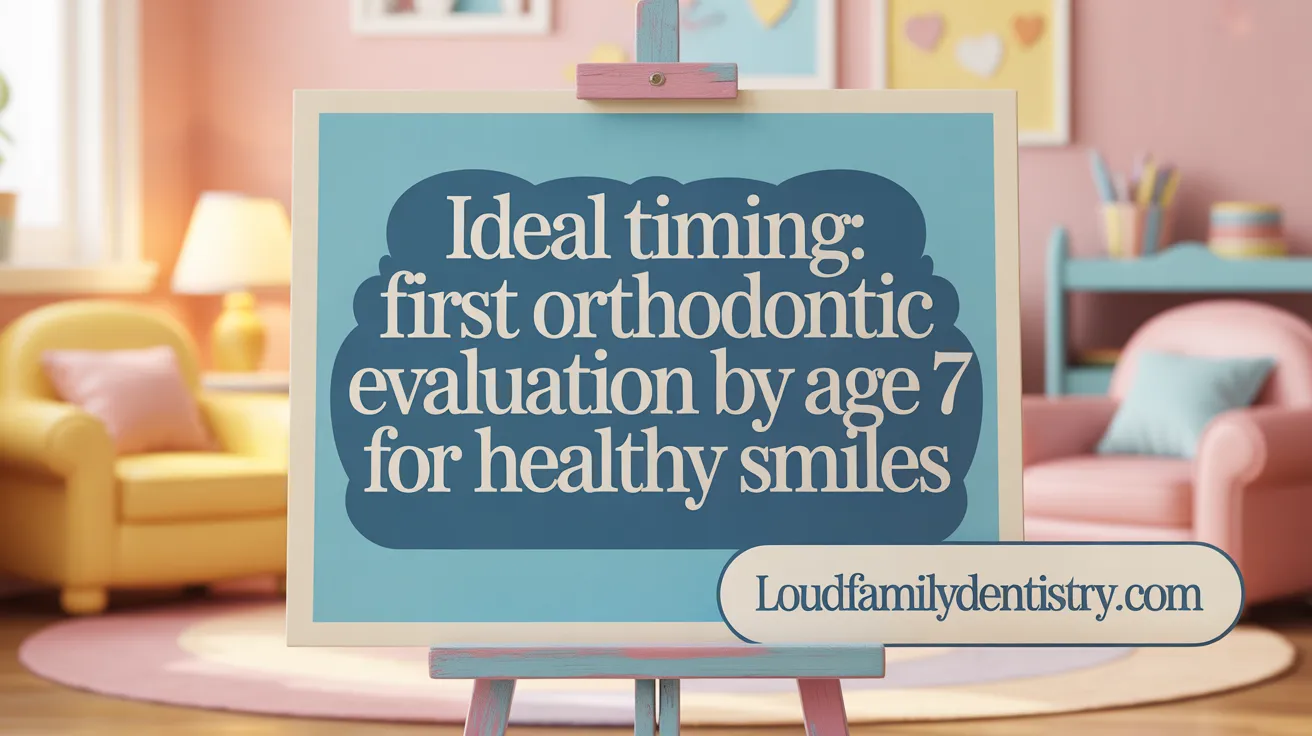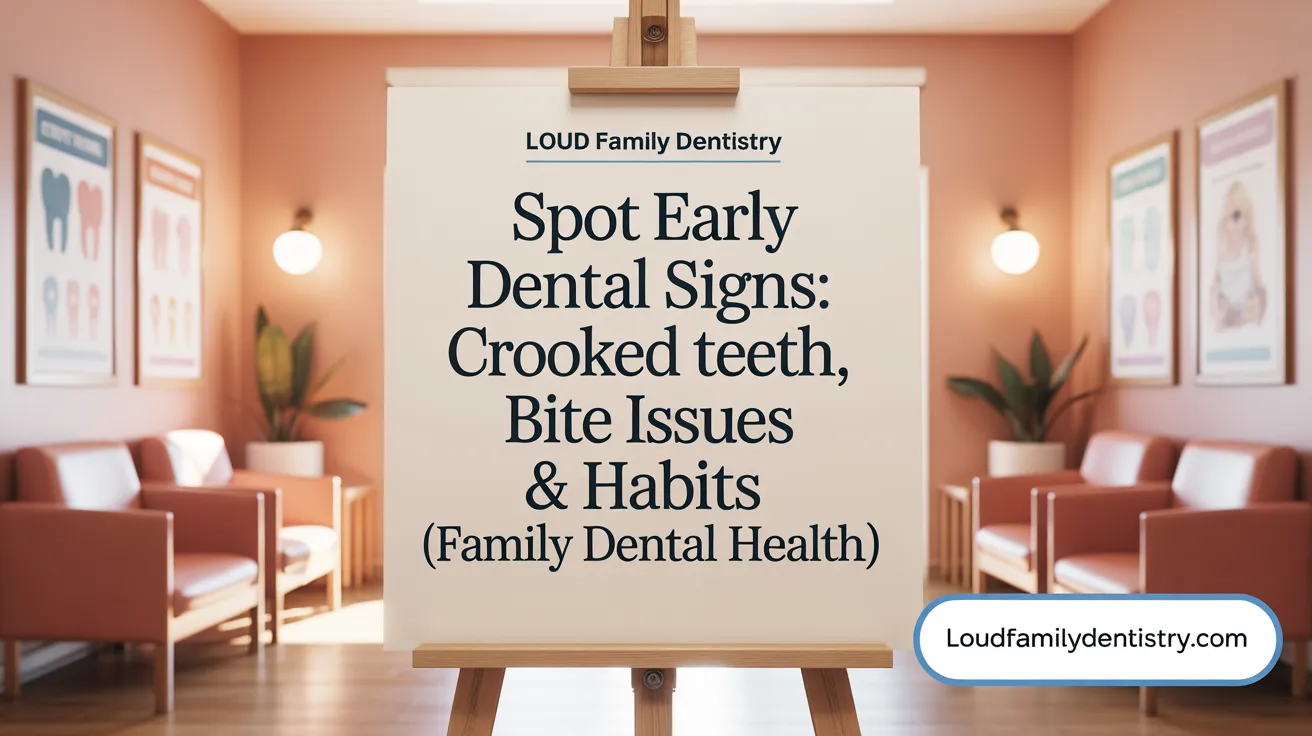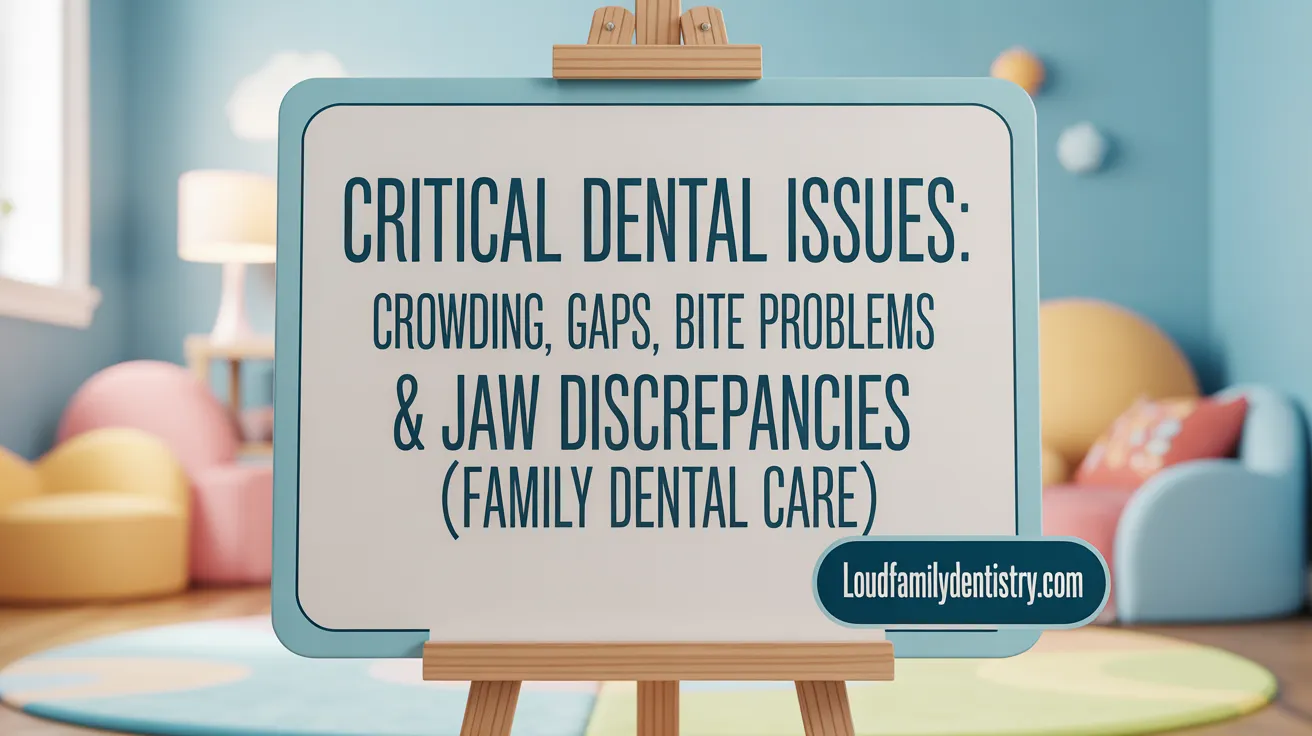Identifying When Your Child May Need Orthodontic Care
Orthodontic health plays a critical role in a child's overall well-being, impacting smiles, speech, comfort, and confidence. Recognizing the early signs of orthodontic issues can help parents and caregivers seek timely professional evaluation, enabling interventions that ensure healthier development of teeth and jaws. This article explores essential indicators that may signal the need for an orthodontic consultation, the importance of early assessment, and what to expect during the evaluation process.
When Should Children Have Their First Orthodontic Evaluation?

Recommended age for first evaluation
The American Association of Orthodontists recommends that children have their first orthodontic assessment by age 7. This timing is crucial because, at this age, a child's teeth and jaws are still developing, which allows for early detection of potential issues.
Rationale for early assessment
Early evaluation provides orthodontists an opportunity to identify emerging problems such as crowding, misalignment, bite issues like overbites or underbites, and harmful oral habits like thumb-sucking. Addressing these concerns early can guide jaw development, create space for permanent teeth, and prevent more complex issues from developing later.
Typical age for starting treatment
Most orthodontic treatments, like braces, usually begin between ages 9 and 14. However, early assessment at age 7 enables orthodontists to plan for interceptive treatments—sometimes called Phase 1—which may include appliances like palate expanders or space maintainers. These interventions can modify growth and development, reducing the need for more invasive procedures later.
Dental and jaw development indicators
Indicators suggesting a child might need an evaluation include early or late loss of baby teeth, crooked or crowded primary teeth, large gaps, difficulty chewing or biting, mouth breathing, and habits like prolonged thumb-sucking.
Other signs include asymmetry in jaw growth, jaw clicking or shifting, speech difficulties, or abnormal bite patterns like crossbites or open bites. Early detection of these signs allows for strategic planning, guiding facial growth and preventing future dental complications.
| Developmental Signs | Typical Age of Observation | Potential Interventions | Additional Notes |
|---|---|---|---|
| Crowded teeth | Around age 7 or earlier | Space maintainers, expansion appliances | Helps guide jaw size and space for teeth |
| Large gaps | Age 7 | Monitoring, possible space maintainers | Ensures proper eruption of permanent teeth |
| Bite issues (overbite, underbite, crossbite) | Age 7 | Early orthodontic correction | Prevents future jaw problems |
| Mouth breathing or snoring | Early childhood | Further assessment, possible airway intervention | Can relate to jaw development or airway obstruction |
| Persistent thumb sucking | Beyond age 4 | Behavioral strategies, orthodontic advice | Can impact teeth and jaw alignment |
Monitoring dental development during this early stage helps orthodontists plan treatments that support healthy growth. Regular evaluations ensure that subtle issues do not develop into more serious problems, ultimately supporting long-term dental health and aesthetic appearance.
Recognizing Signs That Indicate Your Child May Need Orthodontic Evaluation

What are common signs that indicate a child may need an orthodontic evaluation?
Parents should be vigilant about various physical, behavioral, and developmental cues that suggest an orthodontic assessment might be necessary. Common physical signs include teeth that are crooked, crowded, or misaligned, which can interfere with proper cleaning and increase the risk of cavities and gum disease.
Bite issues are key indicators: overbites, underbites, crossbites, and open bites not only affect appearance but can also cause problems with chewing, speaking, and joint health. If a child exhibits abnormal bite patterns, it’s advisable to seek professional advice.
Beyond structural signs, behavioral habits like persistent thumb or finger sucking beyond age five can influence dental alignment, while mouth breathing and snoring often hint at airway or jaw development issues. These habits, if unchecked, may lead to misaligned teeth or facial imbalance.
Functional symptoms such as difficulty chewing or biting into food, speech problems like lisps, and jaw discomfort including pain or shifting are also significant. These issues often point to underlying orthodontic concerns needing early attention.
Timing irregularities like early or late loss of baby teeth are critical visual cues. Early loss can lead to spacing problems, while delayed loss may hinder the eruption of permanent teeth, both risking misalignment.
Recognizing these signs early is essential. Prompt orthodontic evaluation, ideally by age 7, can help guide healthy growth, prevent more serious problems later, and improve your child’s confidence and oral health.
The Importance and Benefits of Early Orthodontic Assessment

Why is early orthodontic assessment important?
Early orthodontic evaluation is crucial because it helps identify potential dental and jaw problems at a stage when growth is still occurring. By the age of 7, children typically have a mix of baby and permanent teeth, which provides a valuable window for assessing how their teeth and jaws are developing.
Detecting issues early allows orthodontists to implement interventions that can simplify future treatment. For example, correcting misalignments or guiding jaw growth while children are still growing can prevent more complicated and invasive procedures later in adolescence.
Interventions such as space maintainers, palate expanders, or partial braces can address problems like crowding, crossbites, or overbites at an early stage. This proactive approach can also help improve breathing, speech, and overall oral function.
Additionally, early evaluation supports better oral health, boosting children’s confidence while reducing their risk of dental trauma. When problems are addressed early, the potential for achieving stable, long-lasting results increases significantly.
Most importantly, assessing children by age 7 leverages natural growth periods, allowing orthodontists to guide development effectively. In doing so, they can help children develop healthier, more attractive smiles, setting a foundation for lifelong dental health.
Understanding What Happens During a Child’s Orthodontic Evaluation

What can parents and caregivers expect during an orthodontic evaluation for their child?
When you bring your child in for an orthodontic assessment, the process is thorough and designed to give a clear picture of their dental development.
The orthodontist begins by reviewing the child's medical history, including any oral habits like thumb-sucking or mouth breathing, and their dental history, such as the timing of baby tooth loss or any dental issues they've experienced.
Next, a comprehensive examination of the teeth, jaw, and bite is performed. This includes checking for crowded or misaligned teeth, bite patterns such as overbites or underbites, and jaw symmetry or shifting.
To gather more detailed information, the orthodontist often uses diagnostic tools. Digital X-rays are taken to visualize the underlying bone structure and the position of incoming permanent teeth. Photographs of the face and teeth are also captured for reference. In some cases, impressions of the teeth are made to create precise models, helping in planning treatment.
Following the examination and diagnostics, the orthodontist discusses their findings with you. They explain what issues might need correction and suggest possible treatment options, like braces, aligners, or space maintainers.
They also talk about the expected timing for any interventions, the estimated costs, and potential risks. This helps parents understand the scope of treatment.
Finally, a personalized treatment plan is developed, outlining the procedures, expected duration, and follow-up visits. This clear communication ensures that parents are fully informed and prepared to support their child's orthodontic journey.
Regular evaluations ensure ongoing monitoring of the child's dental development, allowing for timely interventions if needed, and setting the stage for a healthier, more confident smile.
Dental Issues That Necessitate Orthodontic Consultation and Early Treatment Options

What potential dental issues warrant an orthodontic consultation?
Children showing signs such as crowded or unevenly spaced teeth, bite problems like overbite, underbite, or crossbite, and jaw shifting or clicking should see an orthodontist. Impacted or missing teeth, large gaps, and early or late loss of baby teeth are also indicators. These issues can compromise oral health, leading to cavities, gum disease, excessive tooth wear, speech problems, or jaw pain if not treated early.
Orthodontic treatments such as braces, aligners, or surgical interventions help correct these problems. Early assessment, ideally by age 7, allows for better planning and intervention, which can simplify later treatment and improve dental function and appearance.
Symptoms like jaw pain, grinding, speech difficulties
Children experiencing jaw discomfort, frequent teeth grinding or clenching, and speech issues such as lisps or difficulty pronouncing sounds may have misaligned teeth or jaw discrepancies. These symptoms often reflect underlying bite or jaw alignment problems that orthodontic care can address.
Orthodontic evaluation may include detailed examinations, X-rays, and sometimes models of the teeth to understand the cause.
Role of early Phase 1 treatment in guiding development
Early or Phase 1 orthodontic treatment, typically around ages 6 to 9, focuses on guiding jaw growth and addressing developing problems. This can involve gentle appliances, partial braces, palate expanders, or space maintainers.
The goal is to create an optimal environment for permanent teeth to erupt properly, prevent severe crowding, minimize future treatment needs, and improve facial symmetry and airway function.
Types of devices and interventions used
Common early interventions include palate expanders to widen the upper jaw, space maintainers to hold space for permanent teeth, partial braces, and habit appliances to stop thumb sucking.
More invasive options like headgear or functional appliances may also be used to guide jaw growth. The treatment plan depends on the child's specific needs and developmental stage.
Long-term benefits of early orthodontic care
Starting orthodontic treatment early can lead to several benefits. These include better bite alignment, easier cleaning, and reduced risk of dental trauma, especially for protruding teeth.
It can also prevent complex surgeries or extractions in the future, improve facial aesthetics, and boost confidence and speech development. Early treatment aligns with natural growth patterns, often resulting in shorter overall treatment durations and more stable results.
Taking Action Toward Your Child’s Orthodontic Health
Being attentive to early signs of orthodontic concerns in children is essential for ensuring effective care and long-term oral health. The American Association of Orthodontists emphasizes that all children should have an orthodontic evaluation by age seven to monitor development and intervene when necessary. Early assessments empower orthodontists to detect and manage issues before they fully develop, greatly improving treatment outcomes and reducing complexity. Parents and caregivers should watch for indications such as crowded or misaligned teeth, bite problems, mouth breathing, and persistent oral habits. Prompt consultation not only supports a healthy, functional smile but also boosts confidence and well-being as your child grows. Regular monitoring and expert guidance are key steps in nurturing a lifetime of beautiful, healthy smiles.
References
- Orthodontics for Children: Developing a Healthy Smile
- 10 Early Warning Signs Your Child Needs An Orthodontist
- When Should Your Child Have A First Orthodontic Evaluation?
- Top 5 Signs Your Child May Need Braces: Early Orthodontic Warnings
- When Should Your Child See an Orthodontist? Understanding Signs ...
- Signs Your Child May Need Braces or Other Orthodontic Treatment
- When Should My Child Get Braces? | Grandville, MI Dentists
- Does Your Child Need Phase 1 Braces in Harrisonburg?
